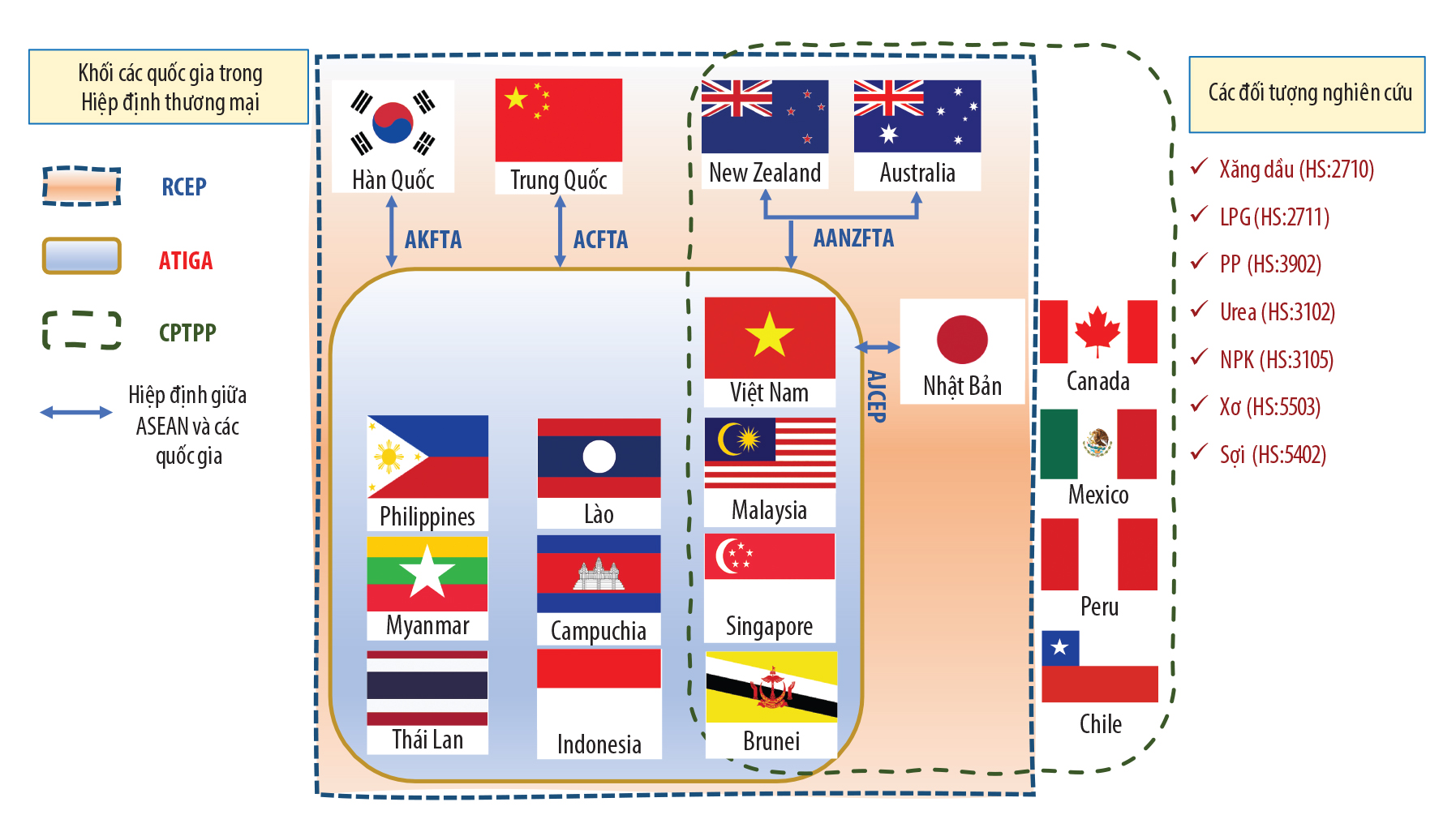Tóm tắt
Hiệp định đối tác kinh tế toàn diện khu vực (Regional Comprehensive Economic Partnership - RCEP) được ký kết ngày 15/11/2020, sau 8 năm đàm phán, là Hiệp định thương mại tự do (Free Trade Agreement - FTA) lớn nhất thế giới với sự tham gia của 10 nước thành viên ASEAN và 5 quốc gia gồm: Australia, Trung Quốc, Nhật Bản, Hàn Quốc và New Zealand. Đến cuối lộ trình, giai đoạn năm 2035 - 2040, Việt Nam sẽ xóa bỏ thuế quan với khoảng 85,6 - 89,6% số dòng thuế với các nước đối tác, và các nước đối tác xóa bỏ thuế quan cho Việt Nam trong khoảng 90,7 - 92% số dòng thuế. Bài báo so sánh thuế nhập khẩu của Việt Nam và thuế nhập khẩu của các nước (trong RCEP) từ Việt Nam và so sánh với biểu thuế của các FTA mà Việt Nam đã tham gia trực tiếp hoặc thông qua ASEAN đối với các sản phẩm chính của Tập đoàn Dầu khí Việt Nam (PVN) và các đơn vị thành viên gồm: xăng dầu, LPG, polypropylene (PP), urea, NPK, xơ, sợi. Từ đó, nhận diện cơ hội và thách thức trong hoạt động kinh doanh các sản phẩm này khi tham gia vào Hiệp định RCEP.
Từ khóa: RCEP, FTA, cơ hội, thách thức.
Opportunities and challenges from tariff reduction commitments within rcep for trade in some of PVN’s products
Nghiem Thi Ngoan, Pham Ba Nam, Nguyen Thi Ngoc, To Minh Hieu, Dao Minh Phuong
Vietnam Petroleum Institute
Email: ngoannt@vpi.pvn.vn
Summary
The Regional Comprehensive Economic Partnership (RCEP) was signed on 15 November 2020, after eight years of negotiation. This is the world's largest free trade agreement (FTA) with the participation of 10 ASEAN member countries and 5 other countries including Australia, China, Japan, South Korea and New Zealand. By the end of the roadmap, which lasts 15 to 20 years, Vietnam will eliminate tariffs on about 85.6 - 89.6% tariff lines for partner countries, while the partner countries will eliminate tariffs for Vietnam in the range of 90.7 - 92%. The article compares Vietnam’s import taxes with those of other RCEP member countries on imports from Vietnam, and with the tariffs in other FTAs that Vietnam has participated in directly or through ASEAN, with regard to key products of the Vietnam Oil and Gas Group (PVN) and its subsidiaries including petroleum, LPG, PP, Urea, NPK, fibre and yarns. Furthermore, the paper identifies opportunities and challenges for import and export of these products after Vietnam’s joining RCEP.
Key words: RCEP, FTA, opportunities, challenges.

Xem chi tiết